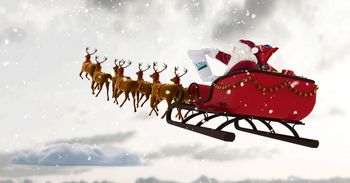
Interventional endoscopic techniques: Foreign bodies, stricture/dilation, peg/pej tube placement (Proceedings)
Esophageal strictures may occur from gastroesophageal reflux (often during surgery), esophageal foreign bodies, neoplasia, and the ingestion of caustic substances.
Balloon Catheter Dilatation of Esophageal Strictures
Esophageal strictures may occur from gastroesophageal reflux (often during surgery), esophageal foreign bodies, neoplasia, and the ingestion of caustic substances. Clinical signs are typical of esophageal dysfunction (regurgitation, painful swallow, excess salivation) and are usually progressive over several weeks duration. Diagnosis of esophageal stricture may be confirmed by barium contrast radiography of the esophagus or by endoscopic examination (e.g., esophagoscopy). Treatment for esophageal strictures have previously included surgery and bougienage with reported success rates of <50% and 75%, respectively. Stricture dilatation using a balloon catheter is simple, fast, and very effective in comparison to these other treatment modalities.
Dilatation Equipment
Esophageal strictures can be effectively treated by a balloon dilatation procedure under general anesthesia using one of several commercial balloon catheters. These catheters are constructed of a strong plastic which becomes non-deformable when maximally inflated. The Rigiflex® Balloon Dilator (manufactured by Microvasive Inc., 480 Pleasant St. Watertown, MA 02172) is one such instrument, and it has a balloon diameter (when fully dilated) of 18 mm and is 8 cm in length. This size catheter is ideal for dilating strictures in both dogs and cats. A pressure gauge, also purchased from the manufacturer, is recommended to avoid balloon over distension and inadvertent rupture.
Technique
Under general anesthesia, the stricture is identified by esophagoscopy and its diameter and length is determined. The diameter of the stricture may be estimated by comparing the lumen to the open jaws of a biopsy forceps. The balloon catheter and pressure gauge are assembled. The balloon catheter (with balloon collapsed) is positioned directly over the center of the stricture with the aid of the endoscope. The balloon is slowly distended with water while directly visualizing the stricture as an assistant monitors dilatation pressure. Maximal dilatation is maintained for 3 minutes and then the balloon is deflated. It is best to use 3 separate but progressively greater dilatation procedures per individual anesthesia. Typically, a total of 2 to 3 balloon dilatations (each requiring a separate anesthesia) are performed over a 7 day period. Those animals having active esophagitis with stricture may require a greater number of dilatations along with therapy for esophagitis. Mucosal hemorrhage is often marked and is to be expected following most procedures.
The major advantages of this technique are direct visualization of the stricture during dilatation, less risk of esophageal perforation, fewer repeated dilatations, and longer remission of signs between dilatations. Mucosal biopsies of the esophagus should be procured in patients suspected of having strictures associated with mass lesions (e.g., neoplasia).
Complications and Post-Dilatation Therapy
Complications of balloon dilatation include mucosal hemorrhage, perforation, and restricturing. Rational post-dilatation therapy (Table 1) should be performed in all patients to alleviate further esophageal injury following dilatation, and to facilitate patient recovery. Consideration should also be given to the nutritional needs of the patient, and placement of a gastrostomy tube may be necessary for nutritional support and to provide esophageal rest.
Table 1 - Rational Post-Dilatation Therapy for Esophagitis
- Esophageal rest is required - consider feeding tube (PEG) placement
- High-protein, low-fat diets are recommended
- Reduce gastric acidity
- H2 receptor antagonists - Ranitidine® (0.1 mg/kg PO q12h)
- Proton pump inhibitors- Omeprazole® (2 mg/kg PO q24h)
- Prokinetic agents to decrease GE reflux - Reglan® (0.2-0.4 mg/kg PO q8h)
- Sucralfate slurry for esophagitis - dissolve 1 gm tablet into 5 ml PO q 8h
- Corticosteroids to reduce fibrosis? - controversial
Percutaneous Endoscopic Gastrostomy (PEG) Tube Placement
Percutaneous endoscopic gastrostomy (PEG) tube placement has found wide applications in providing enteral nutritional support to small animal patients (Table 2). Placement of a PEG tube is useful for feeding dogs and cats when it is necessary to by-pass the mouth, pharynx, or esophagus (Table 3). For long-term tube feeding, PEG tubes are better tolerated and have fewer complications than pharyngostomy or nasoesophageal tubes.
Equipment
Homemade PEG kits or commercial PEG kits can be used. A preassembled veterinary PEG kit is now available (Small Animal PEG Assembly - Mill - Rose Laboratories, Inc., Mentor, OH). The materials needed for homemade PEG tube placement are:
1. A flexible endoscope with foreign body retrieval forceps or biopsy forceps
2. 2-3 feet of suture material (precut) such as 2-0 Vetafil
3. Scalpel blade
4. 18 gauge 1 or 1½" needle
5. Disposable biochemistry pipette tip or 16 gauge over-the-needle IV catheter
6. 20 French (cat) or 24 French (dog) Pezzar-type mushroom catheter (Bard® Urological Catheter-Bard Urological, Covington, GA.)
Pre-prepare the mushroom tip catheter for placement by:
1. Cutting off the excess catheter length
2. Cutting a 2.0 cm portion of this discarded catheter portion to be used as an outer flange.
Placement technique
Withhold food from the patient for at least 12 hours prior to placement. A ketamine/diazepam sedative or inhalation anesthesia (preferred) is appropriate for tube placement. The anesthetized patient is placed in right lateral recumbency and a surgical prep is placed on an area of the left flank just caudal to the last rib. Insert the endoscope into the stomach and insufflate with air distending the body of the stomach against the abdominal wall. An assistant introduces the 18 gauge needle through a stab incision in the skin and into the insufflated stomach. The suture material is advanced into the stomach and grasped with the endoscopic forceps. Pull the suture material and endoscope out of the mouth making sure that the percutaneous end of the suture exits from the flank. Thread the pipette tip, tip end first, on to the suture exiting the mouth and securely attach the suture to the cut end of the mushroom tip catheter with several square knots. Pull the pre-assembled catheter snugly into the pipette tip to be used as a guide. Thoroughly lubricate the catheter and gently pull the catheter via the suture exiting the body wall. The catheter will advance through the oral cavity and stomach, until placed against the gastric body wall. Use firm but steady traction to pull the pipette tip and catheter through the abdominal wall and skin. A small skin incision (3-5 mm) at the point of exit will facilitate this procedure. Thread the other flange onto the catheter and secure with superglue about 1 cm above the skin to prevent tube migration. The percutaneous end of the tube is fitted with a feeding adapter. Apply antimicrobial ointment to the exit site with gauze and secure the PEG tube to the body with an orthopedic stocking. Delay feeding for 24 hours as a temporary gastropexy develops.
Leave the PEG tube in place for at least 5-7 days prior to removal. PEG removal is performed by exerting firm traction on the tube, while applying counter pressure to the skin around the exit site. The mushroom tip will collapse as it pulls through the abdominal wall and the inner flange is typically passed in the feces. Withhold food for 12-24 hours to prevent gastric ingesta leakage as the gastric defect heals.
Complications
Complication of PEG placement are rare. There may be leakage of gastric contents intraperitoneally (due to premature feeding or improper technique), premature removal or mutilation, diarrhea (hyperosmolar diets), or persistent vomiting caused by overzealous feeding or PEG placement near the pylorus causing gastric outlet obstruction.
Table 2 - General Indications for Nutritional Support
- Lack of voluntary food intact for 3-5 days
- 10% loss of body weight
- Muscle wasting; chronic debilitation
- Increased nutrient demands - trauma, surgery, illness
Table 3 - Potential Clinical Applications of PEG Tubes
- Nasal neoplasia
- Oropharyngeal disorders
- Esophagitis or esophageal trauma, laceration, perforation
- Pancreatitis
- Megaesophagus (with aspiration pneumonia)
- Feline hepatic disease
References
1. Harai BH, Johnson SE, Sherding RG. Endoscopically guided balloon dilatation of benign esophageal strictures in 6 cats and 7 dogs. J Vet Intern Med 1995;9:332-335.
2. Burk RL, Zawie DA, Garvey MS. Balloon catheter dilatation of intramural esophageal strictures in the dog and cat: A description of the procedure and a report of six cases. Seminars in Veterinary Medicine and Surgery (Small Animal) 1987;2:241- 247.
3. Armstrong, PJ; Hardie, EM: Percutaneous endoscopic gastrostomy:a retrospective study of 54 clinical cases in dogs and cats. J Vet Intern Med 1990; 4:202-206.
4. Debowes, LJ; Coyne, B; Layton, CE: Comparison of French-pezzar and Malecot catheters for percutaneously placed gastrostomy tubes in cats. J Am Vet Med Assoc 1993; 202:1963-1965.
Newsletter
From exam room tips to practice management insights, get trusted veterinary news delivered straight to your inbox—subscribe to dvm360.




